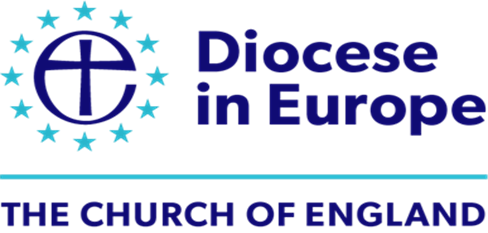WHO STOLE MY STOLE Pt.2
For the curious among you ‘who stole my stole1’ refers to Chaplain’s Musings of 12.10.20.
For those among you who like to make connections, also check the website ‘seasonal worship’. https://stcatherines-stuttgart.de/services/seasonal-worship/
In a recent re-reading of the Book of Exodus I came across some very detailed instructions to the artisans and crafters of the day. What they were tasked with was the making of the first ever set of priestly robes.
What emerged for me from these texts was that the robes were all about God and not remotely about the priest(s) about to wear them.
Let me jump outwards a bit. When we look at church architecture or church furnishings or the crafting of liturgy …. we can ‘look’ at these things from a number of perspectives. One favourite for me has always been this:
When the people built this church – what were they expressing about their faith about their understanding of who God is and what he is like…
When rich people came along and paid for expensive extensions to those first simple churches – what were they expressing about their faith and their understanding of who God is and what he is like…
Ditto the people who have carved pews or stone gargoyles or stitched old-fashioned kneelers, worked on stainglass windows, embroidered altar linens, altar frontals, shaped the liturgy, set the scriptures to music…
The people who even today still furnish some of these things in contemporary versions – what are they seeking to express about their faith and their understanding of who God is and what he is like ?
Back to Exodus 28 and these instructions (revisited incidentally in chapter 39). The materials invested in their making were not only excessively valuable but also of the highest quality. Even details like (talking of a linen piece) ‘and be of one piece with it’ – what is the significance of that and all the other intricate details in these instructions ? The list of gems is mind boggling. To me this chapter says that the people of the time were gathering the best of everything. The best resources and the best skills brought together.
The best of everything at a time in ancient history when the ‘appeasement of deities’ was prevalent in the surrounding cultures. The best of everything for this new people who were not yet a nation (they were still in the Wilderness) breaking away into a wholly different understanding of who God is and what he is like and struggling (perhaps) to articulate that in language forms and terms and indeed rituals and symbols that we take for granted but that were then not yet invented.
Where am I going with this ?
In Exodus 29 Aaron (Moses’ big brother) was selected (a much less ‘loaded’ word than ‘chosen’) to both Wear and Bear these priestly robes. He shall wear them on behalf of the community. In the wearing of them he shall articulate what that community wants to articulate to and about God. The names of the tribes of Israel* are engraved in the shoulder pieces, but also on the breastplate (near his heart). In wearing these Aaron bears those names before God. In so doing he brings his community into the presence of God in what we today might call intercession**.
Aaron is sanctified / consecrated / ordained – first to make him ritually pure so he can both enter into God’s presence and also wear these priestly robes and secondly to be able to serve God. At no point is there any kind of meritocracy going on here or status. All that was required of Aaron was his willingness to serve God and to serve his people in fulfilling this role. He did have to be a fit bloke because all that gold and gems and other metals would have weighed a lot !
Now fast forward – priests in the Anglican Church still wear robes and we call them Vestments, as do those in quite a few other types of churches. Sadly in church history there were times and places when these became status symbols. They became symbols of oppression in some places, of authoritarianism in others, of exclusion from privilege in yet other places and that list too goes on. Put all that next to John 13 where Jesus takes off his (simple) outer robe wraps a towel around himself and kneels to wash the feet of his disciples.
Once the religious world and the political world separated, these traits grew in parallel. From crowns and sceptres to mayoral chains of office. With the weight of gold and gems and the weight of responsibility too some of the unhelpful symbols are there yet.
As an ordained (though not consecrated) priest myself and having in the past had a significant role in helping people explore and discern and articulate their vocation, even priestly vocation, these chapters are good ones to return to. These chapters are not bad places for heads of state to reflect on (they are pre-christian and therefore accessible regardless of faith).
As we all pray for our leaders – local and national – may we be guided in our prayers, and reminded that leadership is more about service and representation of people, not about status or egos or exclusion or career ladders…… enuff said !
*Israel – as in descended from Israel whose birth name was Jacob, Not yet the nation Israel
** Intercession here (as now) works in both direction – he brings the needs of the people to God (though the word used is ‘remembers’) and he also bears the judgement from God when the people need judging – not so comfortable and a glimpse of the ‘cost’ of such a role








